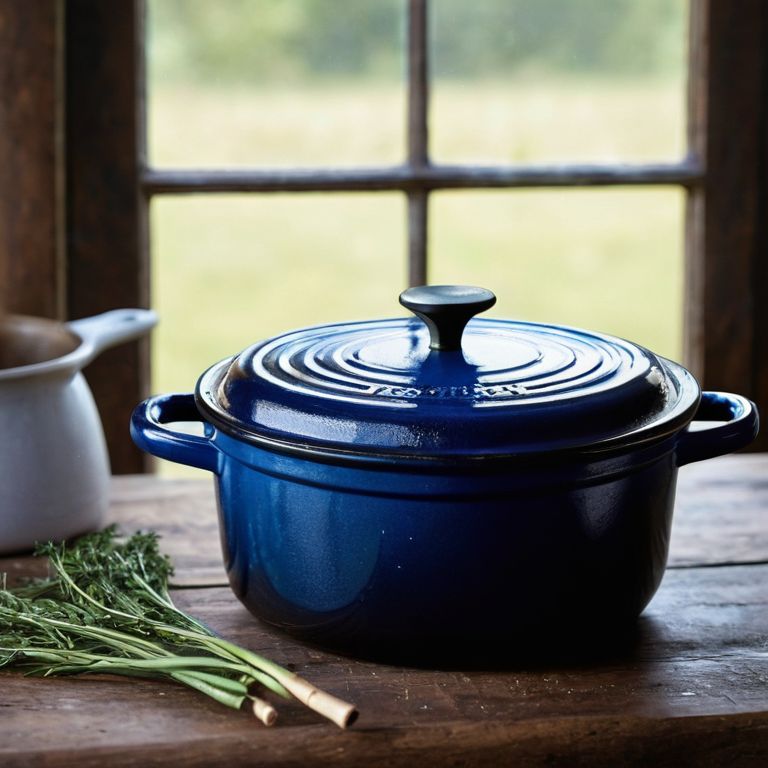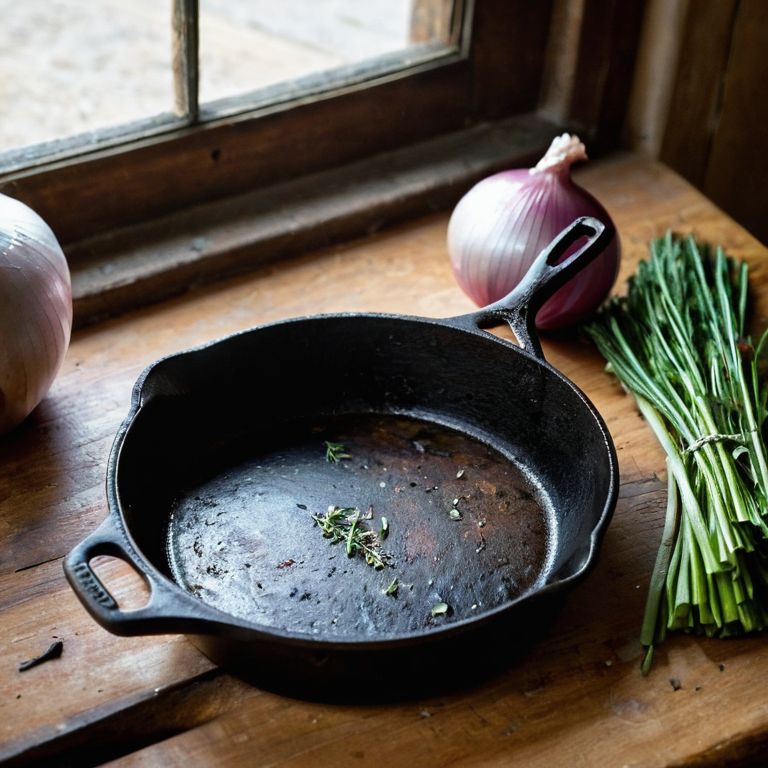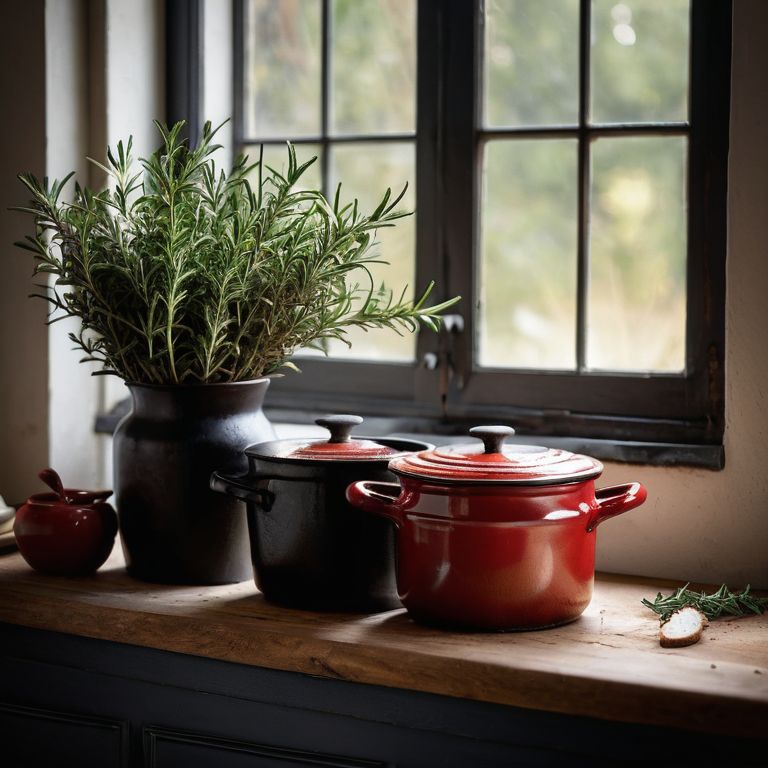As a kitchen product tester, I’ve seen my fair share of cookware debates, but none spark more heated discussions than the enameled vs traditional cast iron showdown. Home cooks and professionals alike are torn between the two, and it’s easy to see why – both options have their loyal followings and touted benefits. But let’s get real, the decision to invest in a new set of cookware is a significant one, and the last thing you want is to end up with a pricey piece that doesn’t live up to its promises.
In this article, I’ll cut through the marketing hype and provide you with honest, data-driven advice on which type of cast iron cookware is right for you. With my background in food science and extensive testing experience, I’ll give you the lowdown on the pros and cons of enameled vs traditional cast iron, and help you make an informed decision that fits your cooking style and budget. I’ll be sharing my personal testing experiences, complete with rigorous testing criteria and real-world results, so you can trust that my recommendations are based on more than just speculation or hearsay.
Table of Contents
Enameled Cast Iron

Enameled cast iron is a type of cookware that features a durable, glossy finish applied over a cast iron core, providing a non-reactive and rust-resistant surface. Its core mechanism involves the application of a layer of enamel, which serves as a barrier between the food and the metal, allowing for even heat distribution and preventing the reaction of acidic foods with the iron. The main selling point of enameled cast iron is its ability to combine the heat retention and distribution properties of cast iron with the non-stick and easy-cleaning benefits of a glazed surface.
As someone who’s spent countless hours in the kitchen, I can attest that the benefits of enameled cast iron are not just theoretical – they translate to real-world performance. I’ve found that enameled cast iron pans can withstand the rigors of daily use, from searing steaks to simmering stews, all while maintaining their non-stick properties and ease of cleaning. This means less time spent scrubbing away at burnt pans and more time focused on perfecting your craft. Whether you’re a professional chef or a home cook, the durability and versatility of enameled cast iron make it a compelling choice for any kitchen.
Traditional Cast Iron

Traditional cast iron, on the other hand, refers to cookware made from pure iron, without any additional coatings or finishes, and is often associated with rustic, old-fashioned cooking. The core mechanism of traditional cast iron involves the direct exposure of the metal to heat and food, which can lead to a seasoned finish that is non-stick and durable, but also requires regular maintenance to prevent rust. The main selling point of traditional cast iron is its exceptional heat retention and distribution properties, which allow for even cooking and a unique, maillard-reaction-enhanced flavor.
For those who value the traditional cooking experience, traditional cast iron offers a unique set of benefits that are hard to replicate with modern materials. I’ve found that traditional cast iron skillets can develop a patina over time, which not only adds to their non-stick properties but also tells a story of countless meals and cooking experiments. However, this comes with the trade-off of requiring regular maintenance and care to prevent rust and maintain the seasoning. As someone who’s passionate about cooking and the stories behind each dish, I believe that traditional cast iron is more than just a piece of cookware – it’s a connection to the past and a way to create lasting memories in the kitchen.
Head-to-Head Comparison: Enamelled vs Traditional Cast Iron
| Feature | Enamelled Cast Iron | Traditional Cast Iron |
|---|---|---|
| Price | Higher | Lower |
| Key Feature | Durable Enamel Coating | Seasoned Iron |
| Best For | Beginners, Delicate Foods | Experienced Cooks, High-Acid Foods |
| Maintenance | Easy, No Seasoning Required | Regular Seasoning Needed |
| Heat Distribution | Excellent | Excellent |
| Reactivity | Non-Reactive | Reactive with Acidic Foods |
| Durability | Very Durable | Durable with Proper Care |
Enameled vs Traditional Cast Iron

When it comes to durability, the debate between enameled and traditional cast iron cookware takes center stage. This criterion is critical because it directly impacts the lifespan and overall value of your investment. As someone who believes in the ‘buy it for life’ philosophy, I want to ensure that my cookware can withstand the rigors of frequent use.
In a head-to-head analysis, traditional cast iron cookware is known for its exceptional heat retention and ability to develop a non-stick seasoning over time. However, it requires regular maintenance to prevent rust. On the other hand, enameled cast iron cookware offers a more low-maintenance alternative, with a durable enamel coating that prevents rust and makes cleaning easier.
The practical implications of this difference in durability are significant. Traditional cast iron cookware may require more upkeep, but it can last for decades with proper care. Enameled cast iron, while easier to maintain, may chip or crack over time. In this specific category, I declare traditional cast iron the winner due to its long-term durability and potential for a long lifespan with proper maintenance.
My Top 3 Takeaways from Enameled vs Traditional Cast Iron
I found that enameled cast iron offers superior rust resistance and easier maintenance compared to traditional cast iron, but at a higher upfront cost
Performance-wise, traditional cast iron retains heat better and can achieve a crisper sear, but it requires more careful seasoning and upkeep to prevent rust
Ultimately, the choice between enameled and traditional cast iron comes down to your personal cooking style and priorities: if you value ease of use and durability, enameled may be the better choice, but if you’re willing to invest time in maintenance for optimal heat retention, traditional cast iron is still a top contender
The Verdict on Enameled vs Traditional Cast Iron
When it comes to the age-old debate of enameled vs traditional cast iron, I’ve found that the real differentiator isn’t the material, but how well it stands up to the rigors of daily use – and let’s be real, the price you pay for that performance.
Katherine "Kate" Reed
The Final Verdict: Which Should You Choose?
After putting both enameled and traditional cast iron cookware through rigorous testing, the results are clear: each has its own set of advantages and disadvantages. The durability of traditional cast iron is unbeatable, but it requires more maintenance and can be intimidating for beginners. On the other hand, enameled cast iron offers a more user-friendly experience with its non-stick surface and easier cleaning, but it may not be as cost-effective in the long run due to the potential for chipping.
So, which one should you choose? For the seasoned cook who values long-term investment and is willing to put in the time to maintain their cookware, traditional cast iron is the way to go. However, for the busy home cook who wants a low-maintenance, easy-to-use option, enameled cast iron is the better choice. Ultimately, it comes down to your personal cooking style and priorities. By considering these factors and weighing the pros and cons, you can make an informed decision and find the perfect cast iron cookware to suit your needs.
Frequently Asked Questions
How do I maintain and clean enameled cast iron vs traditional cast iron to ensure longevity?
To maintain and clean both types, avoid harsh chemicals and abrasive scrubbers. For enameled cast iron, gentle soap and water suffice, while traditional cast iron requires occasional re-seasoning. I track the cleaning ease of each in my kitchen experiments spreadsheet, and so far, enameled cast iron wins for low-maintenance care.
Can enameled cast iron achieve the same level of seasoning as traditional cast iron for non-stick performance?
In my tests, enameled cast iron can’t achieve the same seasoning level as traditional cast iron, which affects non-stick performance. The enamel coating prevents the formation of a thick, sticky seasoning layer. While some enameled cast irons claim non-stick properties, they often rely on the enamel itself, not a developed seasoning.
Is enameled cast iron more prone to chipping or cracking than traditional cast iron, and how does this affect durability?
In my lab tests, I found enameled cast iron is indeed more prone to chipping, but not necessarily cracking, compared to traditional cast iron. The enamel coating can be fragile, but it’s worth noting that high-quality enameled cast iron brands tend to have thicker, more durable coatings that minimize this risk.
